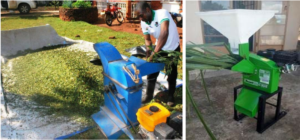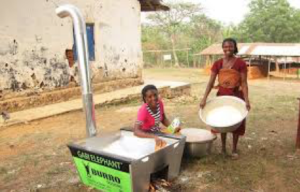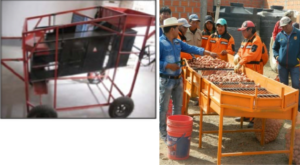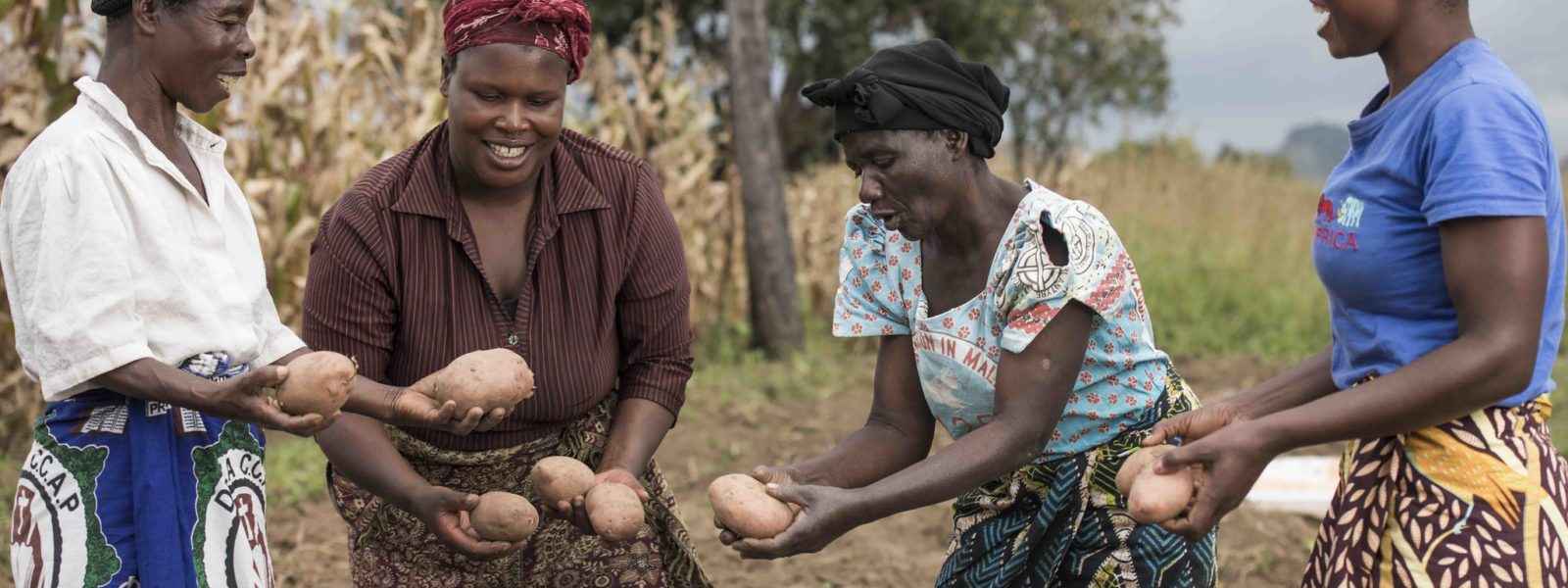Agricultural machinery saves both time and labor for small-scale farmers and is increasingly available in rural areas. However, women’s needs and interests are often not fully considered when these machines are developed, introduced and adopted by communities. As a result, they are often used and controlled by men more than women. Despite this, our research under the GENNOVATE project found that women have a strong interest in mechanization as a way to improve their own circumstances.
Based on these findings, the gender research team under the CGIAR Research Program on Roots, Tubers and Bananas (RTB) has developed a set of guidelines to support project leaders, researchers and development workers to ensure that gender is adequately addressed in research design and interventions in agricultural machineries. The guide includes five stories about machineries and their gender implications from sub-Saharan Africa, Asia and Latin America.
The stories give us three important messages.

(Left) In the original machine the pulley was exposed and women were afraid their children could be injured. Credit: VEDCO Uganda. (Right) An improved chopping machine with a protection cover. Credit: J. Kabirizi
Firstly, agricultural machines and equipment are mostly made by male mechanics. Adjustment is often needed to make it suitable for women farmers due to their body size, physical strength and limited experiences of using them. This was the case with sweet potato silage chopping machines in Uganda and potato grading equipment in Bolivia. Adjusting to women’s needs is often undervalued in the process of development and introduction, but it is a very important factor to increase its adoption rate and thereby bring greater impacts.

Smoke reducing gari fryers in Nigeria. Gari is popular food made from processed cassava. Credit: Adekola Felix Adegoke
Secondly, women’s needs and interests are often ignored in the process of decision-making within the household, community and the project. Male decision-makers may be unaware of women’s real needs or have little incentive to invest in equipment or machinery for women. This was the case in processing factories in Nigeria, where factory owners were not aware of women’s health problems caused by harmful smoke and did not invest in smoke-reducing gari fryers that could reduce women’s exposure to smoke and possibly increase productivity.

(Left) Women found the operation of the machinery difficult due to the height of the equipment and strength required to operate the cranks and lift the potato bags to feed the equipment. Credit: CIP. (Right) The modified machine. Credit: PROINPA Foundation
Similarly, in a project in Peru, potato drying equipment was introduced but it was not adopted by women farmers. This was because during the needs assessment in the planning stage of the project, male researchers talked to male farmers and concluded that the installation of modern drying equipment would accelerate the potato drying process and improve the efficiency of the overall system. However, the women in the community were quite satisfied with their traditional method of sun-drying. These issues could be avoided with more awareness of gender factors.
Thirdly, machines and equipment not only save labor and time but also create symbolic power. In the matrilineal Ede community in the Central Highlands in Vietnam, for example, many men perceive that their decision-making power is higher than their wives’ because they can drive two-wheel tractors while their wives cannot. Tractors thus enable men not only to control some aspects of farming and increase their mobility, but they also strengthen men’s symbolic power. The symbolic aspect of mechanization is a neglected topic in agricultural research, but introducing machineries without gender consideration risks supporting men’s symbolic power and thereby contributing to sustaining the existing gendered power relationships.
This guide, available to download here, also includes critical questions that help develop gender-responsive research/intervention designs in the aspect of mechanization.
Blog contributed by Nozomi Kawarazuka, Social Scientist, International Potato Center
